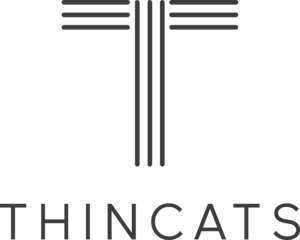Many business owners planning their exit or retirement strategy may be attracted to the idea of transferring ownership to the employees via an EOT. However, for the transaction to take place the EOT needs to have sufficient funds to cover the purchase cost.
There are three main routes to funding the Employee Ownership transition:
1. Employing excess cash in the business for upfront payment
Some or all of the upfront sum is paid but the vendor retains full risk to any deferred consideration component coming from future company profits.
2. Getting a loan from the vendor (subordinate debt)
The vendor converts a portion of equity interest into a loan to the EOT. In effect, the owner is sacrificing some of their initial payment by making a loan to the EOT in exchange for a deferred payment and interest payments over an agreed timeframe.
3. Getting a loan from a bank/alternative lender (senior debt)
In options 1 & 2 the vendor may have to accept deferred payment from the EOT. A solution to this conundrum is for the EOT to take a loan from a third party to enable the owner to receive payments earlier. The EOT repays the external loan out of future profits generated by the business.
How does EOT external funding work?
External cashflow loans operate similarly to other business loans but are focused on future profits rather than the value of specific assets to act as security. The amount that external cashflow loans can fund is typically up to 3x sustainable EBITDA and is usually on a 1-5 year term basis.
The lender will be keen to understand potential risks that could impact the EOT’s ability to service its debt. This will encompass a range of factors from general economic growth prospects to sector and company-specific considerations, such as the team.
Key steps in the Employee Ownership process
An owner can manage the risks associated with the sale by preparing their business for sale to an EOT. In doing so, the business will also become more attractive to a lender.
Important areas to cover in an Employee Ownership transaction plan include ensuring the EOT meets the qualifying conditions such as having a controlling interest in the business, limits on the proportion of continuing shareholders, and distribution of profits.
Secondly, new governance structures are required including the appointment and training of EOT trustees and the establishment of a new leadership team with enhanced information flow.
External lenders will also require information before they are willing to provide the funds to support the purchase by the EOT.
What do external lenders need to know when assessing a loan to an EOT?
The more information the business owner can give to their lender, the faster the lending facility can be arranged and the more the repayment profiles and covenant structures can be aligned with management plans going forward. Here are some of the core criteria that lenders will assess:
- Robust financials – including business performance and earnings before interest, tax, depreciation, and amortisation (EBITDA) indicating the overall profitability of the business.
- Customer concentration – how reliant is the business on a few key customers?
- Competitive advantage – strong growing businesses with good potential that are taking advantage of their market position and hold a key position in the value chain.
- Management expertise – skilled management and demonstrable experience in delivering sustainable profits in that sector.
- A well-constructed engagement plan – for sharing the news with employees and for transitioning control to them. This should also include new leadership responsibilities and potential flight risk of key staff.
- Clear terms of exit – management alignment with the transition terms and the vendor’s role going forward.
- Cultural change management – Managing the transition to EOT involves an important cultural shift. Lenders need to see that the business has laid adequate foundations to smooth the transition.
Robust governance structure – An assessment of the strength and effectiveness of the governance structure including details of the roles and responsibilities of the Main Board and Trust Board.
Contact us:
This article has been written in collaboration with our funding solutions chosen partner Steve Munt from Thincats. If you are interested in a confidential discussion on alternative funding, please contact Steve Munt at steve.munt@thincats.com or our co-author Kevin Uphill at +44 (0)1737 240888. Alternatively, view our Contact Us page or email us at av@avondale.co.uk or fill out the attached form and we will get in touch straight away.

The information and/or any reference to specific instruments contained in this article does not constitute an investment recommendation or tax advice.






